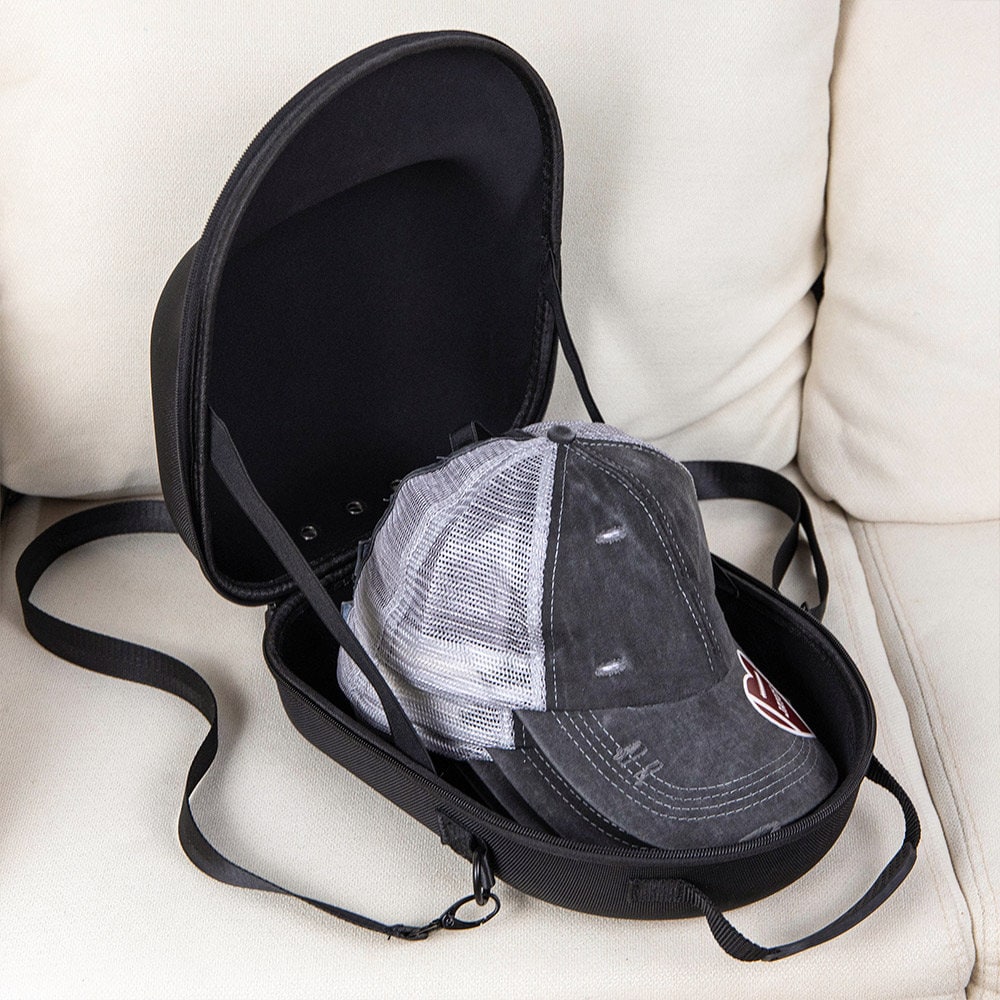Contents
Hat Travel Cases: A Comprehensive Guide
Protecting your prized headwear during travel is crucial, and choosing the right hat travel case can make all the difference. This guide provides a detailed overview of various hat travel cases, helping you make an informed decision based on your needs and preferences.
Types of Hat Travel Cases
Several types of hat travel cases cater to different needs and hat styles. Understanding their strengths and weaknesses is essential for selecting the perfect fit.
| Type | Material | Protection Level | Portability | Price Range |
|---|---|---|---|---|
| Hard-Shell | Hard plastic, molded EVA | High; excellent protection against impacts and crushing | Less portable due to rigidity | $20 – $50+ |
| Soft-Shell | Nylon, polyester, canvas | Moderate; protects against minor bumps and scratches | Highly portable, foldable | $10 – $30 |
| Foldable | Lightweight fabric, often with internal foam padding | Low to moderate; suitable for less delicate hats | Very portable, easily packs flat | $5 – $20 |
Hard-shell cases offer superior protection but are less portable. Soft-shell cases provide a balance between protection and portability. Foldable cases prioritize portability but offer less protection. The best choice depends on the hat’s fragility and your travel style.
Advantages and Disadvantages of Each Type:
- Hard-Shell: Advantages – Maximum protection; Disadvantages – Less portable, can be bulky.
- Soft-Shell: Advantages – Good balance of protection and portability; Disadvantages – Less protection than hard-shell cases.
- Foldable: Advantages – Lightweight and easily packable; Disadvantages – Minimal protection, unsuitable for delicate hats.
Best Case for Various Hat Types:
- Baseball Caps: Soft-shell or foldable cases are generally sufficient.
- Fedora Hats: A soft-shell or hard-shell case offers better protection for the brim.
- Wide-brimmed Hats: A hard-shell case is recommended for optimal protection.
Features and Considerations
Several key features should guide your selection process. Prioritizing these aspects ensures your hats arrive safely at their destination.
- Size and Shape: Ensure the case accommodates your hat’s dimensions.
- Internal Padding: Sufficient padding minimizes impact and prevents scratches.
- Closure Mechanism: A secure closure prevents the hat from falling out.
Material Durability and Water Resistance: Durable, water-resistant materials are essential for protecting hats from the elements and wear and tear during travel. A water-resistant coating can protect against unexpected rain or spills.
Potential Problems with Poorly Designed Cases: Poorly designed cases can lead to hat damage (crushing, bending, scratching), lack of space, and difficulty in packing.
Storage and Organization
Proper packing techniques are vital for preserving your hats’ shape and condition. These steps will help ensure a damage-free journey.
- Prepare the Hat: Gently clean and lightly brush the hat before packing.
- Place the Hat: Carefully place the hat in the case, ensuring it fits snugly.
- Add Padding: Use additional padding (tissue paper, bubble wrap) to fill any gaps.
- Secure the Closure: Securely fasten the case’s closure mechanism.
Packing Techniques for Various Hat Shapes and Sizes:
- For Baseball Caps: Place the cap brim-down to avoid bending.
- For Fedoras: Use additional padding around the crown and brim.
- For Wide-brimmed Hats: Consider using a larger case or adding extra support to prevent brim damage.
Tips for Maintaining Hat Shape and Condition: Avoid overpacking the case; use additional padding as needed; consider placing the hat case in a larger suitcase to provide extra cushioning.
Materials and Construction, Hat travel case
The materials used significantly influence a hat travel case’s durability and protective capabilities. Understanding these differences aids in informed purchasing decisions.
Comparison of Materials: Nylon offers durability and water resistance; polyester is lightweight and affordable; EVA provides excellent shock absorption; hard plastic provides superior protection but can be heavier.
Impact of Stitching, Reinforcement, and Padding: Reinforced stitching and strategic padding enhance the case’s ability to withstand pressure and impacts. Proper padding minimizes the risk of hat damage.
Visual Representation of a High-Quality Hat Travel Case: Imagine a hard-shell case constructed from durable, molded EVA plastic. The interior is lined with plush, high-density foam padding, and the case features reinforced stitching and a secure, double zipper closure. The exterior is sleek and scratch-resistant.
Maintenance and Care
Regular cleaning and maintenance extend the lifespan of your hat travel case. These steps will help keep your case in top condition.
- Cleaning: Wipe down the exterior with a damp cloth; for fabric cases, spot clean as needed.
- Repairing Minor Damage: Use fabric glue or a patching kit to repair small tears; replace broken zippers as needed.
- Extending Lifespan: Store the case in a cool, dry place when not in use; avoid overloading the case.
Purchasing Considerations

Careful planning before purchasing a hat travel case ensures you select the best option for your needs. This checklist will help you in your decision-making process.
- Budget: Determine your price range.
- Intended Use: Consider the frequency and type of travel.
- Hat Types: Select a case that accommodates your hats’ sizes and shapes.
Importance of Reviews and Price Comparisons: Reading reviews provides insights into other users’ experiences; comparing prices helps you find the best value.
Reliable Sources for Purchasing: Online retailers (Amazon, eBay) and specialty luggage stores offer a wide selection of hat travel cases.
